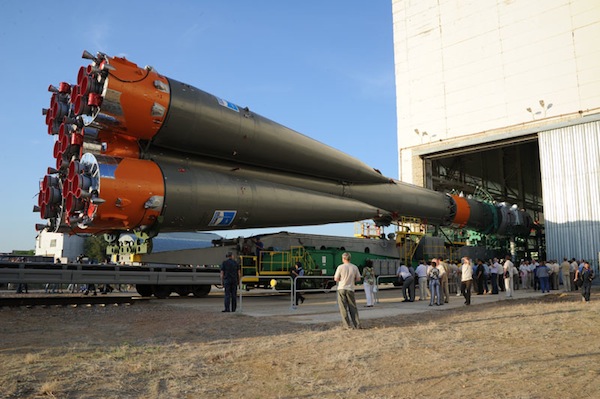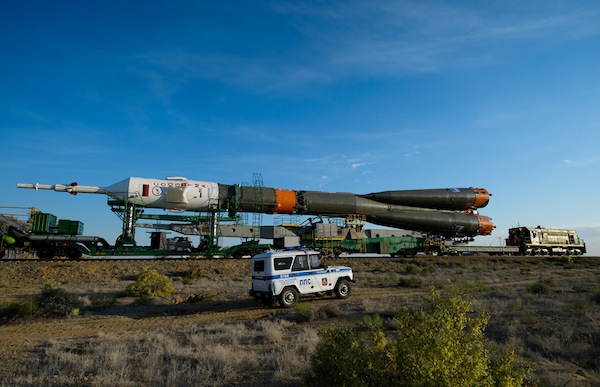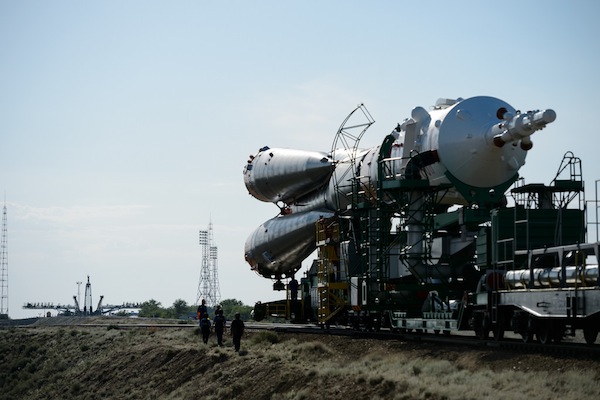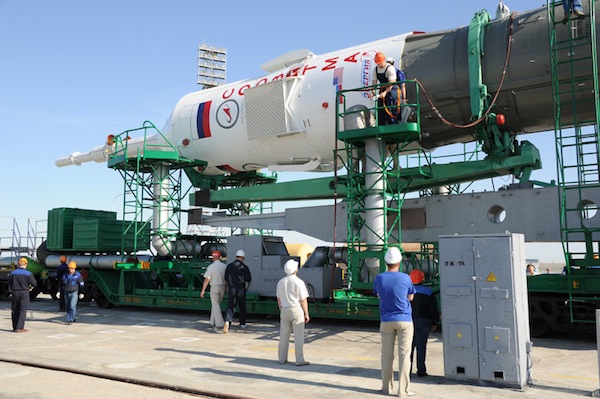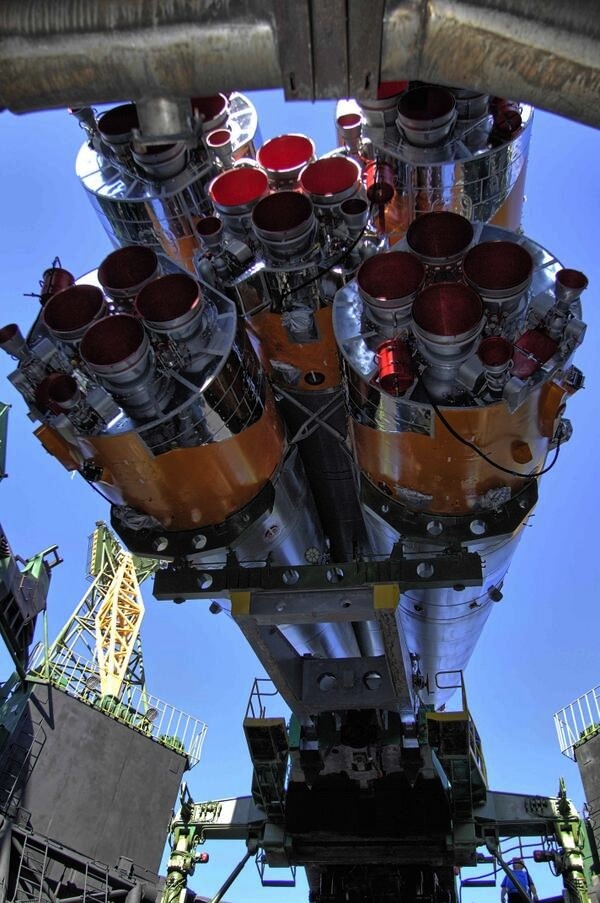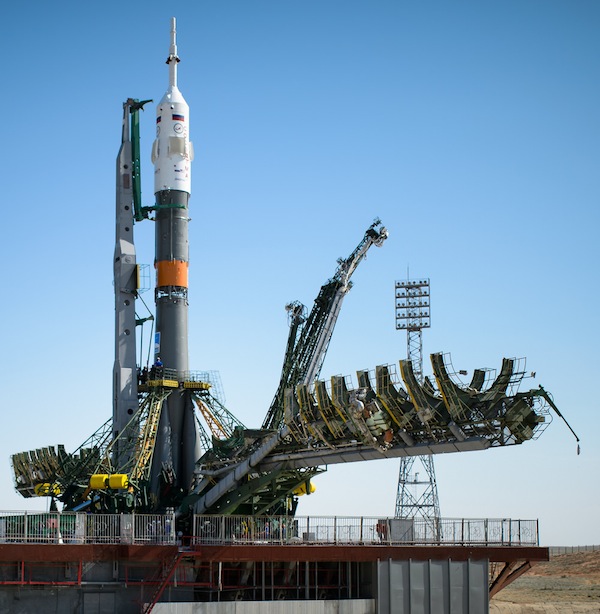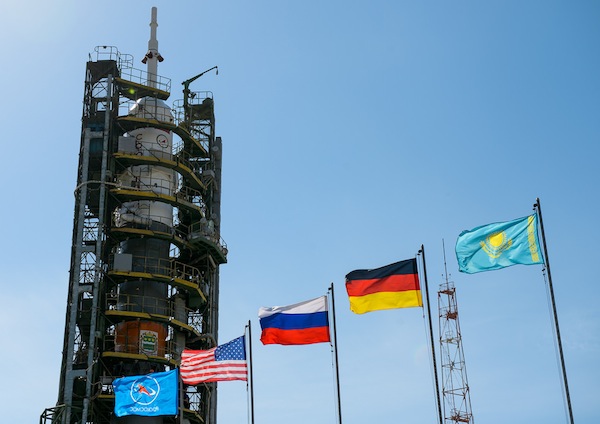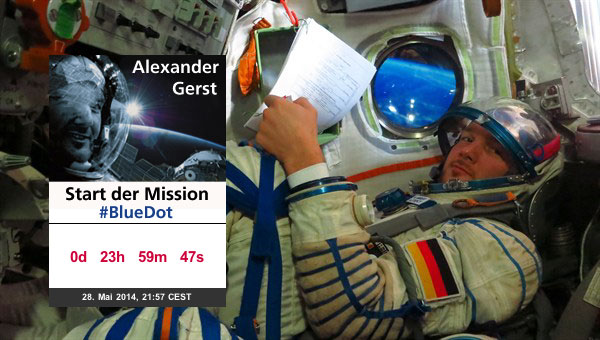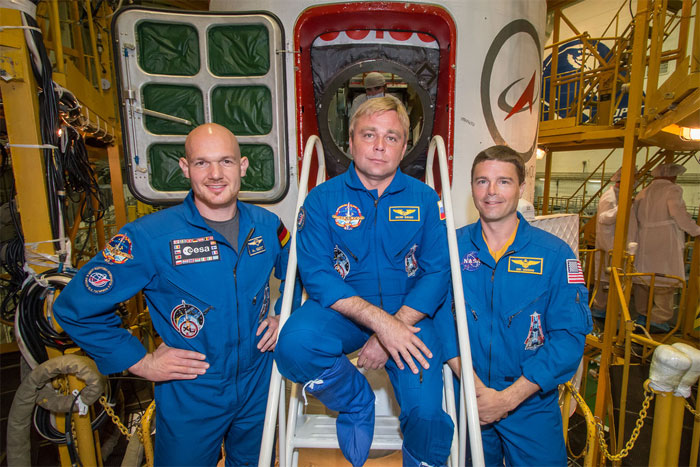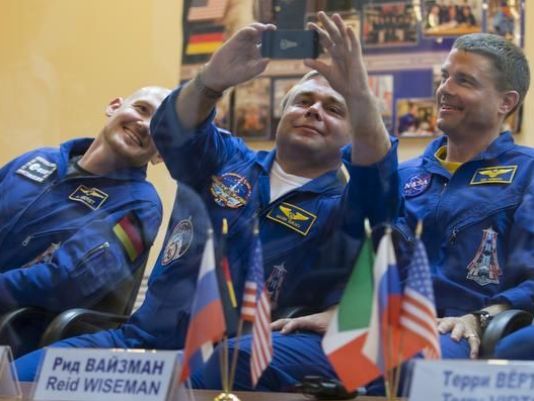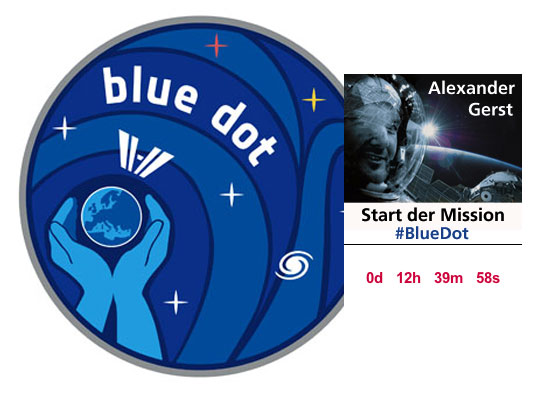Wednesday, 28 May 2014 - 21:00 CEST: WATCH THE LAUNCH OF ALEXANDER GERST AND CREWMATES
On 28 May, German ESA astronaut Alexander Gerst, NASA's Reid Wiseman and Russian Maxim Suraev will be launched aboard a Soyuz spacecraft from the Baikonur Cosmodrome in Kazakhstan for a challenging six-month mission on the International Space Station. Launch is scheduled at 1957 GMT.
Docking and ingress to the Space Station will occur very early next morning, with rendezvous taking place just 4 orbits or 6 hours after launch.
Live coverage will be provided in three parts for launch, docking, hatch-opening and crew greetings; with images from the historic cosmodrome, the mission control centre near Moscow, from inside the Soyuz capsule, the docking cameras and onboard the Space Station after hatch-opening.
Launch 19:00-20:15 GMT - 21:00-22:15 CEST
Docking: 01:00-02:00 GMT - 03:00-04:00 CEST (29 May)
Ingress: 03:10-04:00 GMT - 05:10-06:00 CEST (29 May)
Quelle ESA
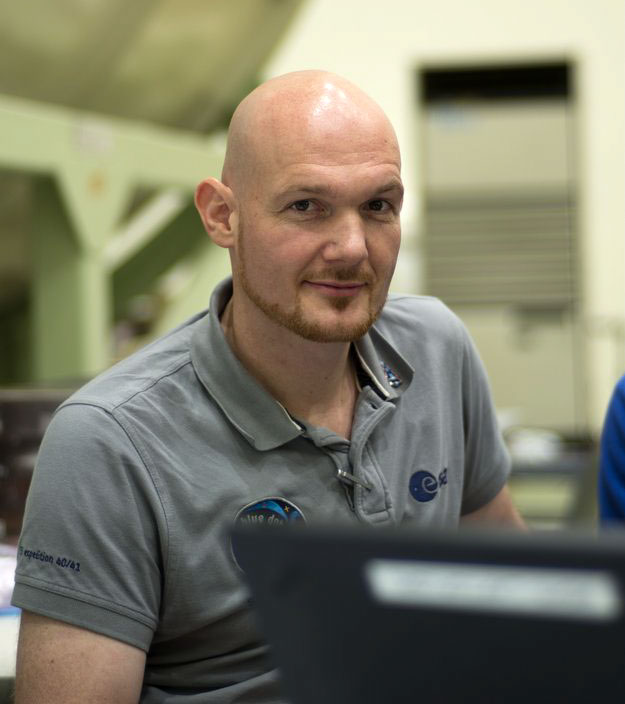
EUROPAS NEUER BOTSCHAFTER IM ALL
.
Er ist Wissenschaftler, Abenteurer und Sympathieträger zugleich: ESA-Astronaut Alexander Gerst soll am 28. Mai mit Sojus TMA-13M als elfter Deutscher ins All fliegen und 166 Tage auf dem Außenposten der Menschheit leben, forschen und Unbekanntes entdecken.
Seine Mission heißt „The Blue Dot“ – Der blaue Punkt. Der Name erinnert an das berühmte Foto, das die NASA-Raumsonde Voyager 1 vor mehr als zwei Jahrzehnten aus den äußeren Regionen des Sonnensystems vom Heimatplaneten machte. Die Erde erscheint darauf als kleiner blasser blauer Punkt, der sich vom tiefen Schwarz des Alls als Oase des Lebens abhebt und gleichermaßen fragil und schützenswert ist.
Feuriger Nachtstart
Verläuft alles nach Plan, hebt die Trägerrakete Sojus-FG mit dem an der Spitze befindlichen Raumschiff Sojus TMA-13M am 28. Mai 2014 um 21.56 Uhr MESZ vom legendären Startplatz 1 des Kosmodroms Baikonur (Kasachstan) ab. Ein geschichtsträchtiger Ort, denn von hier startete am 12. April 1961 der erste Mensch ins All: Juri Gagarin.
Nachtstarts sind etwas Besonderes, schon wegen des feurigen Farbspiels der aufsteigenden Trägerrakete am pechschwarzen Nachthimmel der kasachischen Steppe. Der rot-gelb-weiße Feuerstrahl der Triebwerke taucht das Startgelände in gleißende Helligkeit. Schade, dass dieses Naturschauspiel keine Zugaben erlaubt.
Nach der Kopplung ist die ISS-Crew komplett
An Bord des Raumschiffes befindet sich die aus dem russischen Kommandanten Maxim Surajew (42, 2. Flug) und seinen beiden Erstfliegern, den Bordingenieuren Gregory Wiseman (USA, 38) und Alexander Gerst (ESA/D, 38) bestehende Crew. Nur vier Erdumkreisungen müssen sie zurücklegen. Dann haben sie schon nach einem rund sechsstündigen Flug ihr Ziel in 410 Kilometern Höhe erreicht. Jetzt folgt eine der kritischsten Phasen der Mission, die Kopplung. Sollte sie automatisch nicht möglich sein, dockt der Kommandant per Handsteuerung an die Station an.
Die drei Neuankömmlinge werden von der dreiköpfigen ISS-Stammbesatzung um Kommandant Steven Swanson (USA, 3. Flug), Alexander Skworzow (Russland, 2. Flug) und Oleg Artjomjew (Russland, 1. Flug) bereits sehnsüchtig erwartet. Damit erreicht die Expedition 40 ihre Sollstärke von sechs Mitgliedern.
Im Rahmen der ISS-Expeditionen 40 und 41 wird Alexander Gerst sechs Monate lang als Bordingenieur seinen Dienst auf der Raumstation tun. Er ist damit der siebente ESA-Astronaut, der eine Langzeitmission absolvieren wird und der dritte deutsche ESA-Astronaut auf der ISS.
Ihn erwarten ein umfangreiches wissenschaftliches Programm mit mehr als 100 Experimenten aus den Bereichen Materialwissenschaften, Fluidphysik, Raumfahrtmedizin, Strahlenbiologie, Biotechnologie, Sonnenforschung oder Astrophysik, aber auch innovative Technologiedemonstrationen.
Zu den Höhepunkten seiner Mission zählen die Ankunft des fünften und zugleich letzten europäischen Transportfrachters ATV 5 „Georges Lemaître“ sowie ein mehrstündiger Ausstieg in den freien Weltraum. Alexander Gerst wird damit zu den privilegierten Erdenbürgern gehören, die als Außerirdische auf Zeit das Erlebnis der grenzenlosen Dimension „Weltraum“ erleben dürfen.
Last but not least: Ende September wird die Männerwirtschaft an Bord der ISS etwas aufgelockert. Frauenbesuch ist angesagt: Mit der Ankunft des nächsten Sojus-Raumschiffes gelangt Jelena Serowa als erste Russin an Bord der ISS. Sie ist überhaupt erst die vierte russische Kosmonautin seit 1963.
Langzeitflug ist bis zum 10. November geplant
166 Tage sind für den Flug von Surajew, Wiseman und Gerst eingeplant, bis sie am 10. November 2014 mit ihrem Raumschiff Sojus TMA-13M wieder die Heimreise zur Erde antreten werden. Neu ist die weitere Verfahrensweise. Bislang verbrachten alle europäischen Astronauten ihre ersten Tage in Russland oder in den USA.
Alexander Gerst wird als erster Astronaut unmittelbar nach der Landung in der kasachischen Steppe direkt nach Europa fliegen, nach Köln. Dort werden alle medizinischen Untersuchungen durchgeführt, sogleich mit dem Fitness- und Rehabilitationsprogramm begonnen und die wissenschaftlichen Forschungen fortgesetzt.
.
Quelle: ESA
.
Update: 13.50 MESZ
.
Soyuz spaceship to take new crew to International Space Station
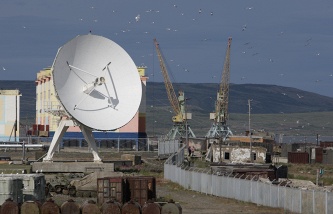
Russian satellite that burned in atmosphere was key one in digital TV system
.
BAIKONUR, May 28, The manned spaceship SoyuTMA-13M with an international crew of next long-duration space expedition, the ISS-40/41 mission, will blast off from Baikonur spaceport on Wednesday in a journey to the International Space Station.
A spaceport official told ITAR-TASS, "The carrier rocket Soyuz FG, with the Soyuz TMA-13M atop, is to be launched from Gagarin's Site 1 of Baikonur at 23:57, Moscow time".
The spaceship will be manned by Russian cosmonaut Maxim Surayev, NASA astronaut Gregory Wiseman, and European Space Agency (ESA) astronaut Alexander Gerst. They are to join Russian cosmonauts Alexander Skvortsov and Oleg Artemyev, as well as NASA astronaut Steve Swanson who have been working aboard the ISS since March this year. It is planned that Surayev, Wiseman, and Gerst will work in orbit for 167 days.
The crew will effect the spaceship's docking with the ISS according to a shortened, six-hour, diagram of the flight already at 05:48, Moscow time, on May 29. The spaceship will moor by the smaller research module Rassvet (dawn) (MIM-1) of the orbital station.
One of the advantages of the shortened diagram of flight is that the crew do not have to get adapted to zero gravity in the enclosed space of the Soyuz spaceship where, besides, it is rather cold. Weightless condition begins to tell on the human organism in approximately five hours' time, that is, the crew will be getting adapted to zero gravity aboard the ISS in comfortable conditions.
The first manned flight according to the shortened diagram (when the spaceship makes only four orbital revolutions) was made by the crew of the spaceship Soyuz TMA-08M in March 2013, and by the subsequent manned spaceships 09, 10, and 11. However, during the previous manned space launch in March this year, the Soyuz TMA-12M traveled to the orbital station in accordance with the standard diagram lasting 48 hours.
The arriving crew are to carry out an extensive program of applied research and experiments, video filming and photography on board, do work with cargo transport spacecraft of the Progress series, and accomplish many other tasks.
Along the entire flight path, the safety of the spaceship flight will be ensured by about 20 military aircraft and civil planes and helicopters as well as by a search-and-rescue ship of the Russian Navy against the possibity of an emergency landing of the Soyuz TMA-13M.
Quelle: ITARTASS
.
Update: 21.45 MESZ
.
Start von Alexander Gerst - NASA-TV-LIVE - FRAMS
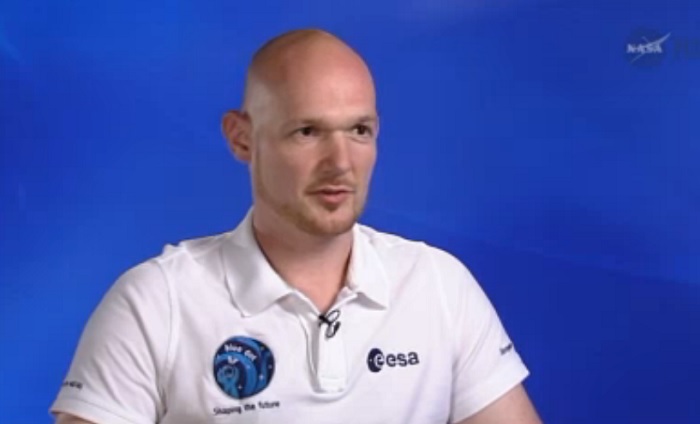
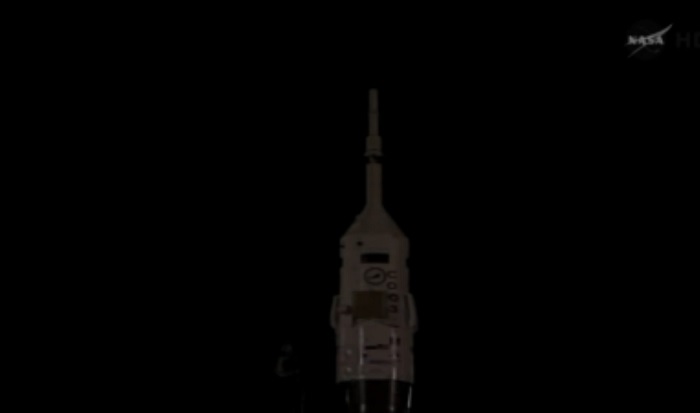

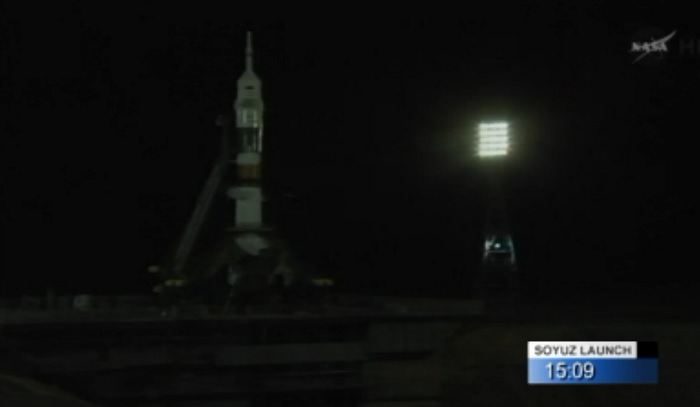
...
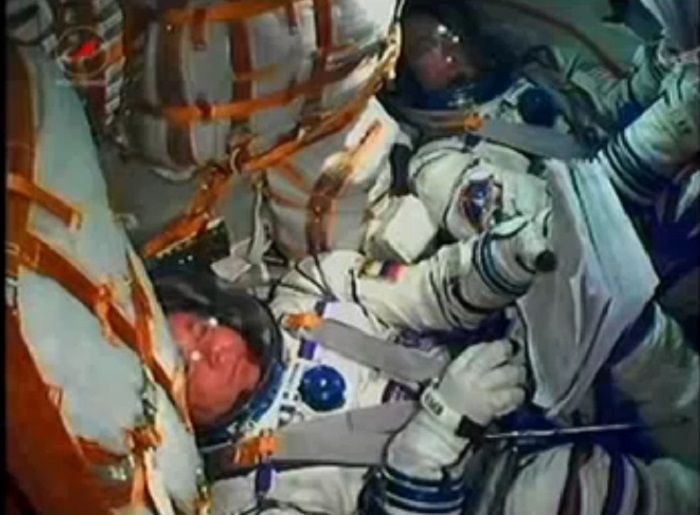
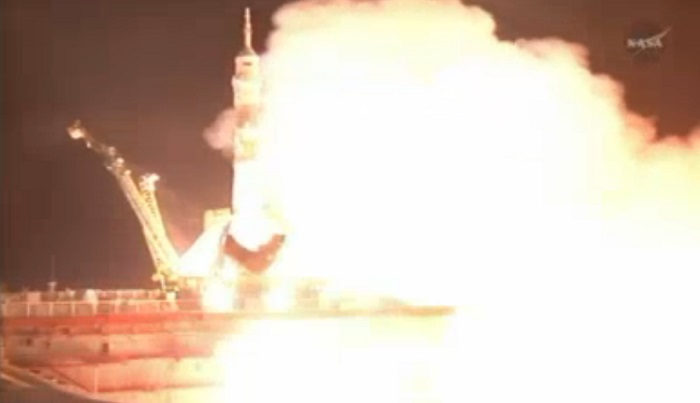
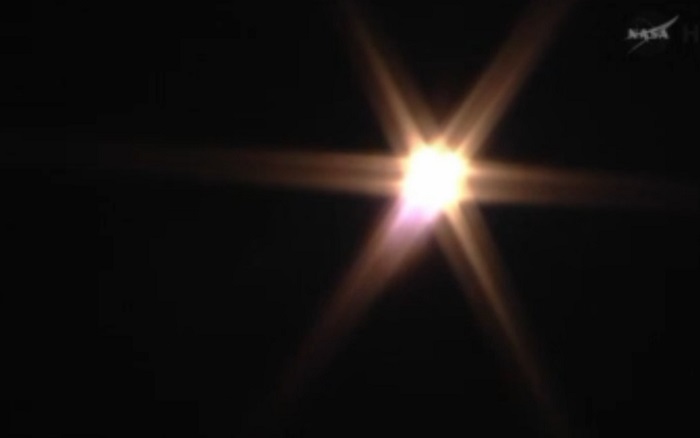
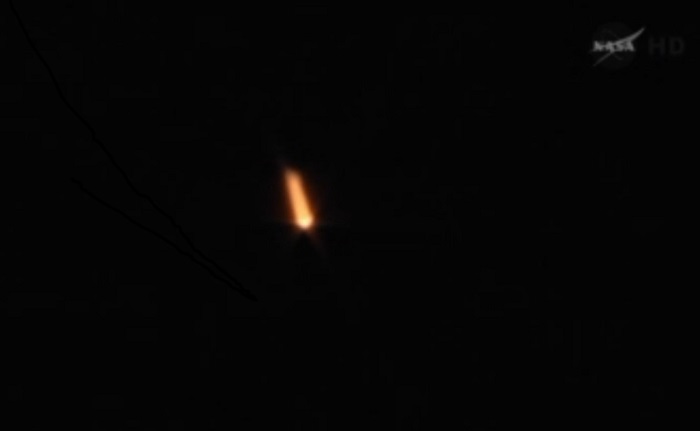

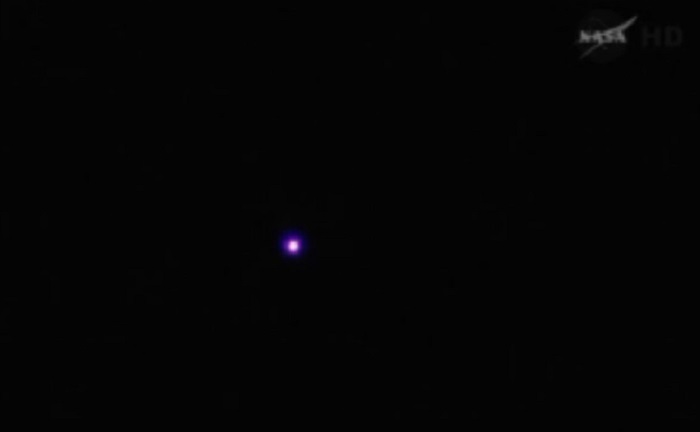
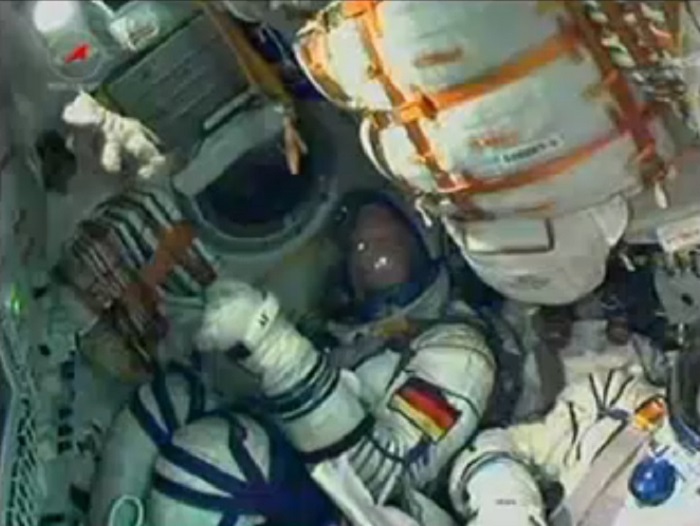
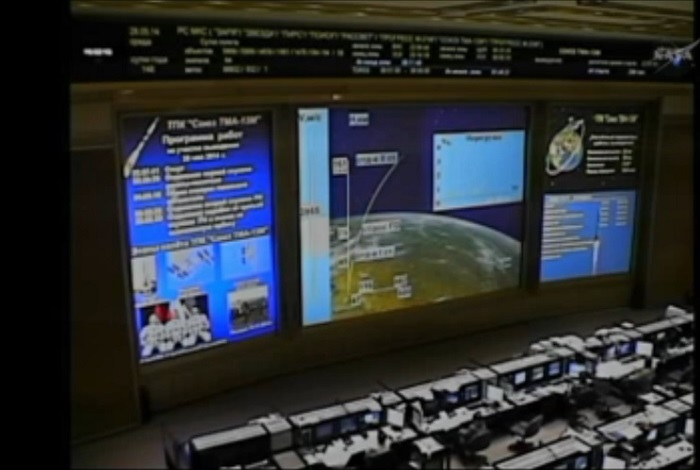
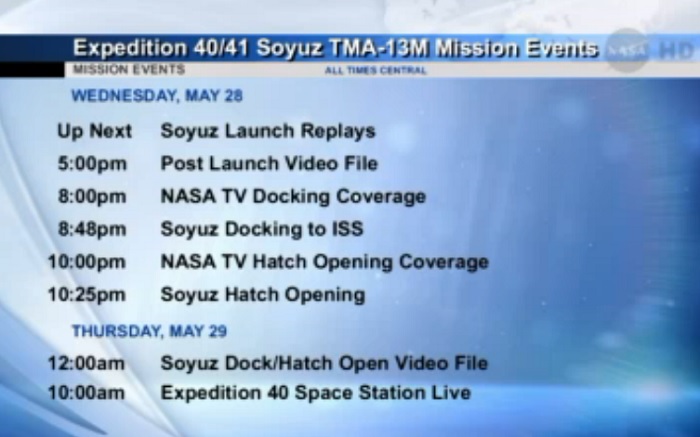
Quelle: NASA-TV
.
Update: 23.20 MESZ
.
Wenn keine Wolken die Sicht auf das Duo ISS und Sojus behindern lohnt ein Blick in den Himmel für "Nachteulen"
A few hours after the Soyuz TMA-13M spacecraft is launched with Alexander, Max and Reid on board, the International Space Station will fly over Western Europe. You can see our ISS from Earth just by looking up at the right time; here's (all times in local time: Central European Summer Time CEST).
Launch: 21:57:41, 28-May-2014
Docking: 3:48, 29-May-2014
The first good chance to see the space station and the Soyuz from Central Europe will be around 02:37 on Thursday morning. The ground track of the station for this pass is shown in the map. Observers directly on this line will see the Station pass right overhead. The station will come from the Southwest and move toward the Northeast. It will pass into the shadows at 02:36 and, depending where you are, you would see the station come out into the sunlight high in the sky (in France) or lower (in Germany and further East).
To the North of the ground track, the ISS will peak in the South (the lower the further away you are from the ground track); observers South of the ground track see the station to the North.
Using the bright reflection of the ISS as a beacon, it should be easy to see the Soyuz as well. At the time of this pass pass, around 02:37, the distance between the station and Soyuz will be about 100 km, which amounts to an angular separation of 13° if the they are flying directly overhead – this is about the same angle as that subtended by your four spread fingers (excluding the thumb) when holding your hand at arm's length. This angle will decrease the lower in the sky you see the space station and Soyuz. Both spacecraft will move across the sky on a similar trajectory.
By the time the spacecraft reaches the Eastern border of Poland, they will only be separated by about 80 km.
A second possibility to see the space station from Europe will occur around 04:14, which is about half an hour after their planned docking.
.
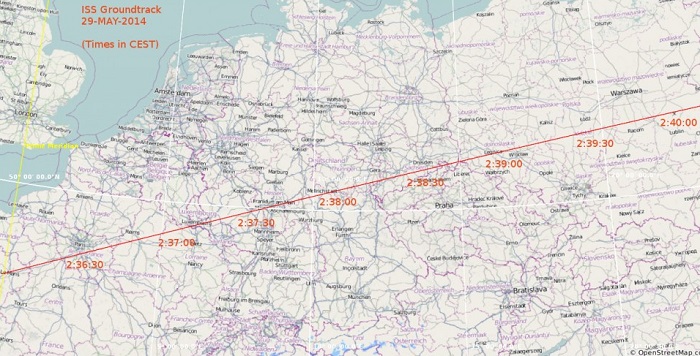
Space station path projected over Europe
.
Update: 29.05.2014 10.00 MESZ
.
Rückblick auf Start von Alexander Gerst :

.
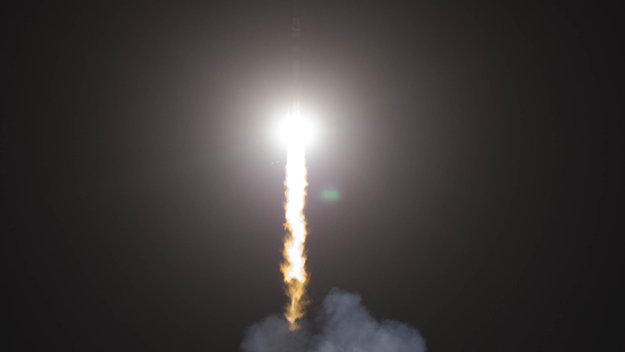
Quelle: ESA
.
Update: 10.15 MESZ
.
Ankunft von Alexander Gerst auf der ISS
.
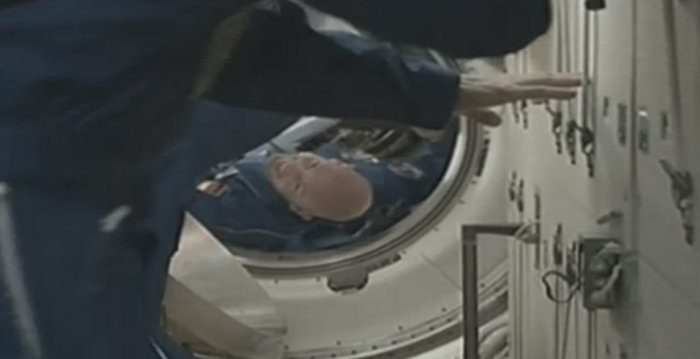
ESA astronaut Alexander Gerst as the hatch opens separating the Soyuz spacecraft and the International Space Station, his new home for six months.
The launch of Expedition 40/41 with Alexander Gerst, NASA astronaut Reid Wiseman and Roscosmos commander Maxim Suraev from Baikonur Cosmodrome in Kazakhstan took place six hours earlier.
Their spacecraft, Soyuz TMA-13M was propelled to the International Space Station at 21:57 CEST.
Alexander has 100 experiments planned for his Blue Dot mission.
Quelle: ESA



